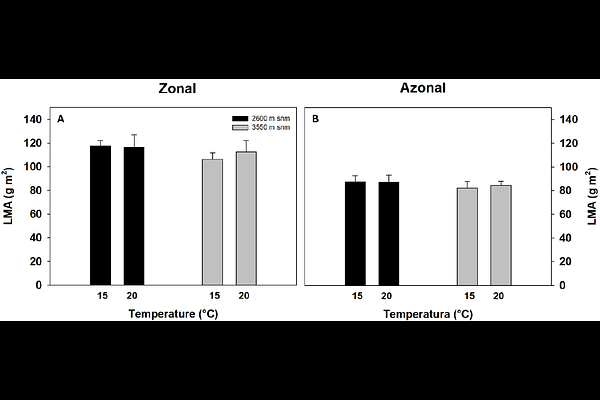Growth temperature trigger adjustments in net photosynthesis of high-elevation plants from the Andes of Central Chile

Growth temperature trigger adjustments in net photosynthesis of high-elevation plants from the Andes of Central Chile
Viveros, R. G.; Saez, P. L.; Cavieres, L. A.
AbstractTemperature significantly influences plant morphology and photosynthesis at high altitudes, shaping distinct altitudinal patterns. Lower temperatures at higher elevations typically increase leaf mass per unit area (LMA), potentially reducing mesophyll CO2 diffusion (gm) and chloroplast CO2 availability, which can limit photosynthetic rates (AN). However, most evidence comes from field studies where elevation-related factors, like gas pressure, water, and light, covary. Habitat type further affects plant responses, as wetland (azonal) plants may be more sensitive to thermal changes due to water buffering effect on temperature fluctuations. To isolate temperature effects, we conducted a controlled experiment with plants from two elevations (2600 and 3550 m a.s.l.), exposing them to two daytime temperatures (15 and 20 {degrees}C). We measured LMA, gm, and AN . Growth temperature significantly influenced photosynthesis and gm but not LMA. Plant origin and habitat type (zonal vs. azonal) also shaped responses. Our findings reveal that temperature impacts photosynthesis by altering mesophyll diffusion independently of LMA. Furthermore, adaptations to specific elevations and environments, such as wetlands, contribute to the variability in responses. This study highlights the nuanced role of temperature in shaping photosynthetic traits in mountain plants.